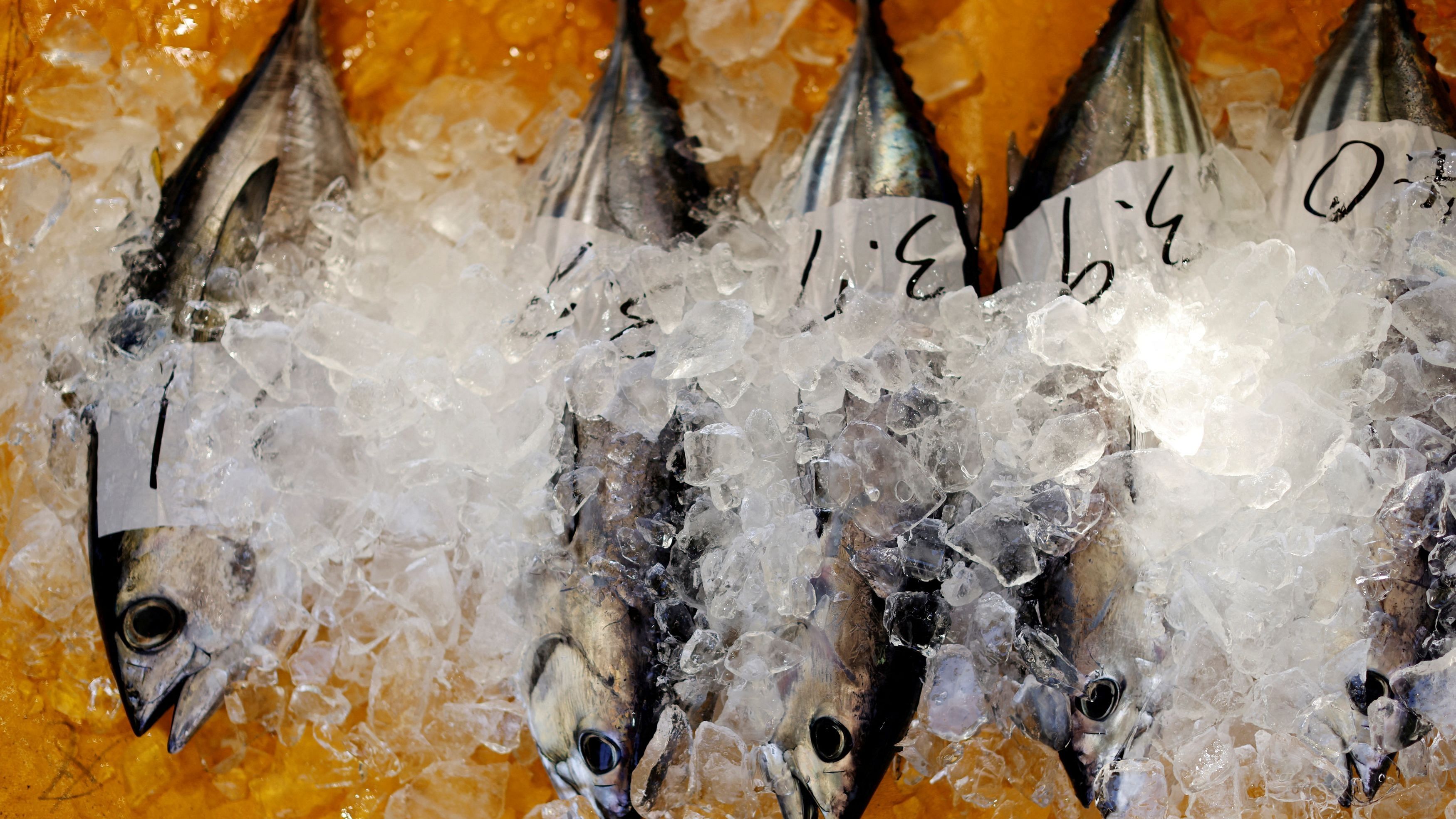
Katsuo (skipjack tuna) are kept in ice during a wholesale auction at Kure Port, in Nakatosa Town, Kochi Prefecture, Japan.
Credit: Reuters Photo
Japan aims to restore its annual fish catch to 4.4 million metric tons by 2030 from record lows last year, a Fisheries Agency official said, adding that no impact was expected from the release of water from the wrecked Fukushima nuclear plant.
Japan began releasing treated radioactive water into the sea from nuclear plant last week, facing criticism at home and abroad, in particular from its biggest trading partner China, which banned Japanese seafood imports.
While the overall economic impact of the ban is negligible, market research firm Teikoku Databank said more than 700 Japanese food exporters are affected. The government has promised them financial support.
"Japan's government is continuing monitoring to ensure the safety of local fish, so there is basically no impact on our goal to expand the fisheries production," Takahisa Yamamoto, assistant director of policy planning division at Japan's Fisheries Agency, told Reuters on Wednesday.
Tests of seawater near the Fukushima power plant north of Tokyo have not detected any radioactivity, the environment ministry said on Sunday.
Olive flounder and gurnard caught for separate testing off the Fukushima coast between Aug. 24 and Aug. 26 found no radioactive traces above detectable levels, according to a Fisheries Agency analysis reviewed by Reuters.
Fisheries production, excluding fish farming, hit an all-time low of 2.92 million tons last year, down 9 per cent from a year earlier, which Yamamoto said was mainly due to a change in currents that pushed fish away from areas in which they were previously caught.
To restore the catch to 4.4 million tons - the level last seen in 2010, before a 2011 earthquake and tsunami that destroyed the Fukushima Daiichi nuclear plant, the agency plans to increase fish stock levels by implementing catch limits.
It is also supporting fishermen to diversity their catch from saury, squid and salmon, stocks of which are decreasing due to rising sea water temperatures caused by global warming, to sardines and yellowtail, which are being caught in larger amounts, Yamamoto said.
Other support for the industry includes helping to boost aquaculture and exports, Yamamoto said, as fish consumption is growing globally, unlike demand in Japan where people have been adding meat to their diets.
As Japanese's eating habits become more like those in the West, fish consumption per person has nearly halved to 23 kg in 2021 from 40 kg in 2001, while meat consumption rose to 34 kg from about 25 kg.